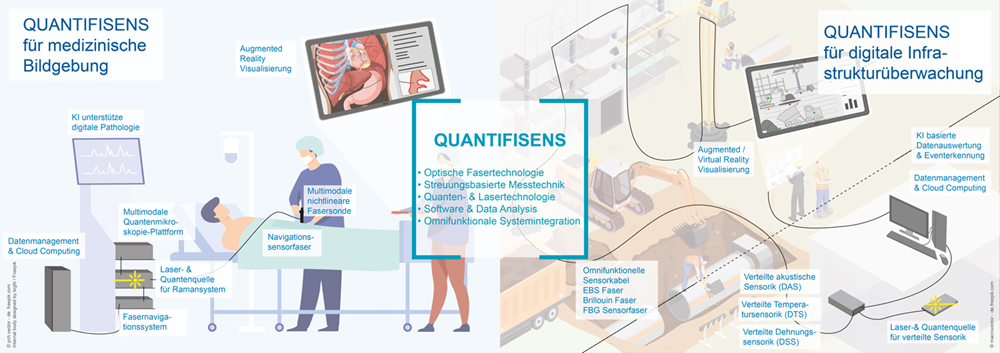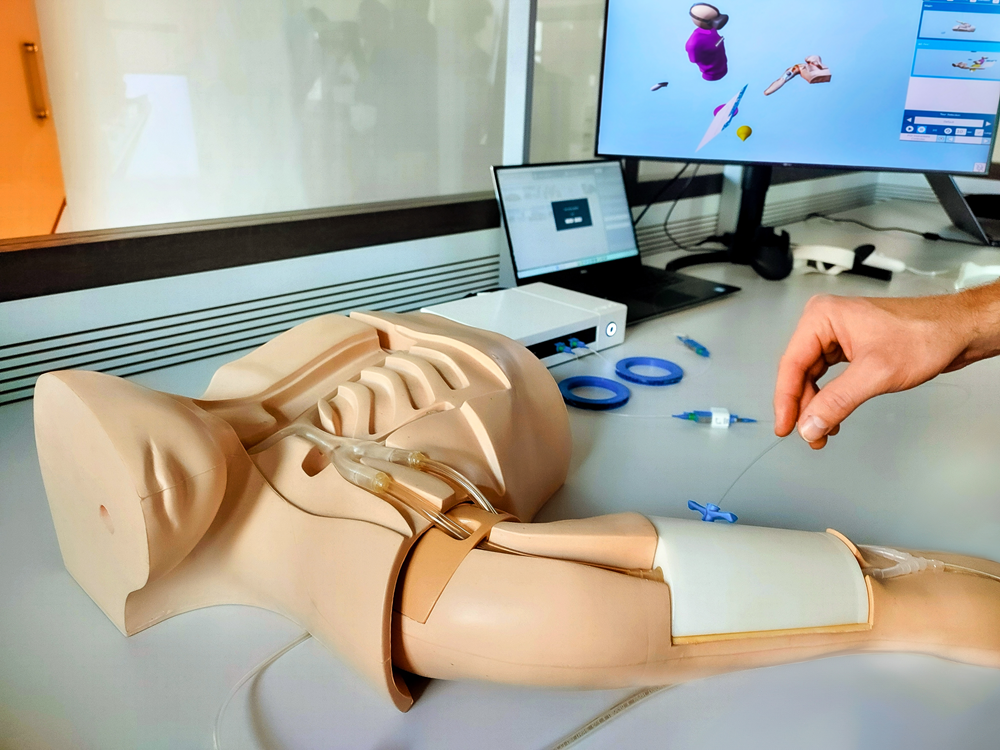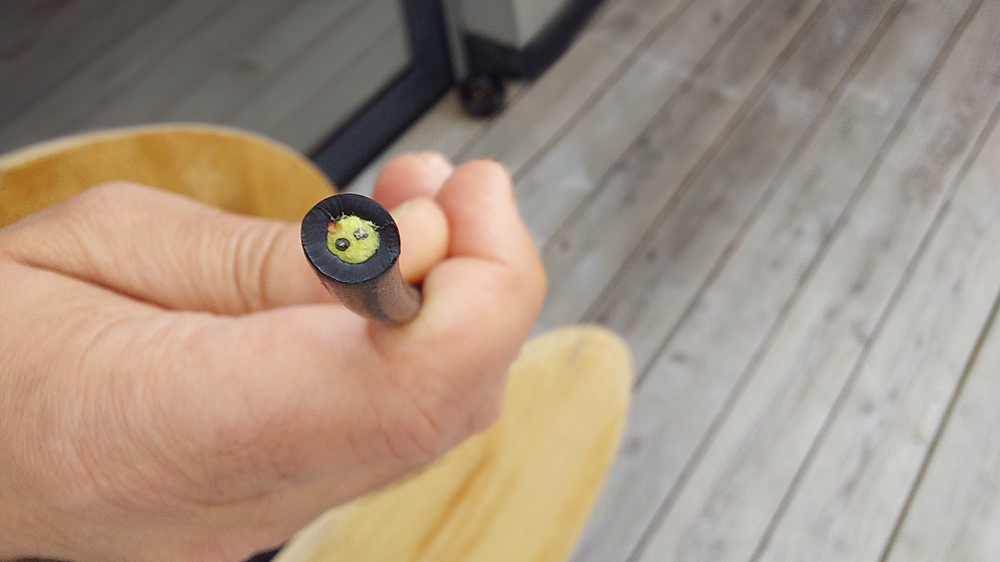Fraunhofer IOF reports successful results in the QUANTIFISENS project
The eyes and ears of AI
The German Federal Ministry of Research, Technology, and Space (BMFTR) has provided around twelve million euros in funding to the regional research alliance QUANTIFISENS in Thuringia. The results are positive: the alliance has developed new fiber- and quantum-based sensor technologies and further established the Free State as a center for specialized optical fiber technologies.
Sensors are the silent heroes of the AI age: they give people and machines unprecedented insights into the world around us and even within us. It is therefore important to develop new technologies for small, precise, and durable sensors.
Thuringia has a long tradition of developing the most sophisticated sensor technologies, especially in the field of optical technologies. Supported by the RUBIN ("Regional Entrepreneurial Alliances for Innovation") funding program, eleven companies and two research institutions have joined forces in the QUANTIFISENS alliance over the past three years to remain at the forefront of global innovation. With twelve million euros in funding, they have developed novel sensors based primarily on special glass fibers.
"Effective knowledge transfer between research and industry is our competitive advantage. The Fraunhofer Gesellschaft is a global leader in this field," summarizes Dr. Stephanie Hesse-Ertelt, senior research and development coordinator of the QUANTIFISENS alliance.
Medical imaging reimagined
One highlight of the project was the development of a self-navigating, imaging fiber probe for use in the operating room. It allows doctors to see tissue in the body - for example, in the heart - during surgery. Laser illumination and three different imaging modes make it possible to visualize different types of tissue in different ways.
In addition, small changes in the laser beam can be used to measure how strongly and in which direction the fiber is bent. Thanks to modern calibration methods in conjunction with AI-supported data evaluation, the probe always "knows" where it is. This eliminates the need for harmful X-rays during surgery. VR glasses visualize the images in real time and open up new possibilities for gentler and more precise procedures. The system was built as a demonstrator and is available for further testing.
Listen to buildings
Fiber optics are mostly used for seeing, or at least for transmitting optical signals. However, fiber optics can also detect acoustic signals – you could say they "hear." The reason for this is that even the smallest vibrations cause a change in the transmitted optical signals. Using appropriate measurement technology, these signals are evaluated and changes in the environment surrounding the fibers are calculated.
The teams from Fraunhofer IOF and a telecommunications equipment supplier working on the QUANTIFISENS project have succeeded in simultaneously detecting and distinguishing between noise and temperature changes. Special fibers were developed for this purpose and installed together in a cable. Such a cable can be laid in a building and "hears" via the respective fiber whether there is tension in the concrete or, for example, whether a fire has broken out.
Contributions from Fraunhofer IOF: From special fibers to quantum imaging
The teams at Fraunhofer IOF draw on decades of experience in projects such as these – both in technology development and in collaboration with industry partners and technology transfer. The technology portfolio is broad: in addition to application-specific special fibers, quantum imaging methods were also developed for QUANTIFISENS.
In quantum imaging, one beam of light is sent to an object and another to a detector. Through the exchange of information between the two beams in a nonlinear crystal required for this purpose, the image information is transmitted from the object to the detector, even though the two beams use different wavelengths. This enables extremely sensitive imaging despite low-energy radiation of tissue, for example in medicine and materials science.
Sustainable impact and outlook
In order to bring innovations into the economy in a sustainable manner, strong networks along the value chain are needed. This is exactly what was achieved in the QUANTIFISENS project: the partners not only developed a technology platform, but also a strong regional network.
In the exploitation phase, which is now beginning, the results are to be translated into products. Discussions are already underway about follow-up projects in which hardware and software manufacturers will work closely together. Artificial intelligence plays a major role in this; it is crucial in evaluating the complex signals from its "eyes and ears." In this way, QUANTIFISENS will have an impact far beyond the project period and strengthen Thuringia's role as a location for future photonic technologies.


